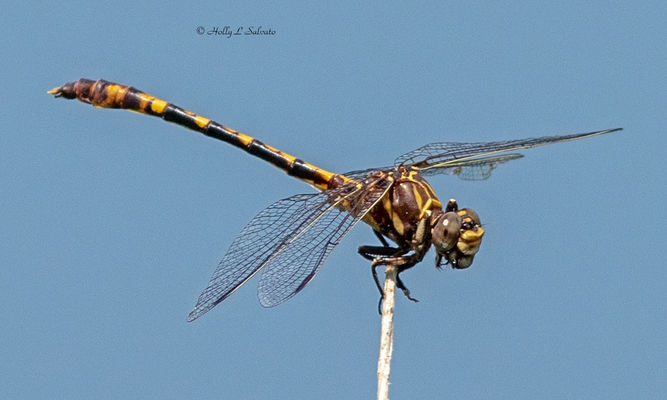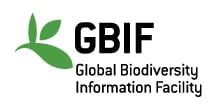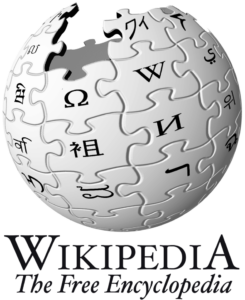Scientific Name: Progomphus sp Selys, 1854
English Name: Gray Sanddragon
Classification:
Kingdom: Animalia
Phylum: Arthropoda
Class: Insecta
Order: Odonata
Family: Gomphidae
Description:
Head :The mouthparts are pale yellow with black apices, eyes are dark, and the antenna is black with a grey scape. The labrum, antepostclypeus, and basal part of antefrons are light brown, postfrons is olive green, vertex is dark brown, and the postocellar ridge is black with a slight concavity at its middle. The occiput is black, and the posterior head area is black with pale yellow lateral spots. Thorax: The prothorax is mostly black with pale yellow spots on each medial side. The pterothorax is mostly black with pale yellow stripes; thin pale yellow antehumeral stripes are not connected with pale stripes on the collar. There is a broad pale yellow stripe on the medial part of each mesepisternum, and the metepimeron has a broad pale yellow stripe on its lower half. The venter is light brown. The femoral armature is dark brown, the inner face of profemur is pale yellow, and the remainder is brown. The third tarsi are about two-thirds the length of the third tibia, and the lamina tibialis (or tibial keel) of the first tibia is one-fifth the tibial length. Wings: The wings are hyaline with black venation. The pterostigma is black, occupying 5 cells on the forewing and 4.5 cells on the hindwing. There are eight paranal cells from the wing base to the apex of the subtriangle in the forewing and six in the hindwing. Antenodal crossveins on the forewing are 12/12, on the hindwing 9/9, with the fourth one thickened in all wings. Postnodal crossveins on the forewing are 8/8, on the hindwing 9/9. A basal subcostal crossvein is present in all wings. Triangles and subtriangles are 2-celled in all wings, except for the right forewing, where the triangle is free. Abdomen: The overall coloration is black, with pale yellow markings on the lower lateral portions of S1−2. S1 has an almost vestigial tubercle, and auricles are olive green with minute denticles on the posterior margin. S3 has three triangular pale yellow spots, two laterally and one dorsally. S4−5 have a continuous pale yellow dorsal spot at their base, and S6−7 have one dorsal spot on each side of the midline. Posterior hamuli are black, stocky, with a broad hook, and the anterior portion bears a pronounced ridge with a row of small teeth. Anal Appendages: The overall coloration is black with pale yellow tips. There is an enlarged basal externo-lateral dilatation, bearing three to four large teeth (more visible in dorsal view) and obliquely oriented. The inferior carina of the cercus is slightly curved downwards, with a row of several minute blunt denticles. The epiproct is forcipate, with a supero-external tooth acute and located at the medial portion of each forceps. The tip of the epiproct is blunt and bifid.
Habitat & Distribution in Bangladesh:
Inhabit sand bars in small streams and shallows of wide lakes; sand-bottomed streams and rivers, and in the north, sand-bottomed lakes.
Environment:
Freshwater, Terrestrial
Comments:
They are semi aquatic. Larvae are hatched in water. But they fly away when they got matured.





